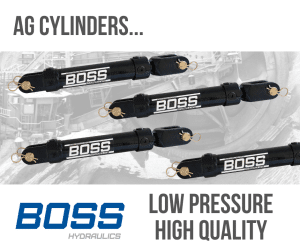
Agricultural cylinders or AG Cylinders as they are known, provide power for a huge range of mechanical components including agricultural equipment such as harvesters and seeders but also have many other industrial applications and are widely used in transport industry equipment and vehicles to lift, tilt and tip. They rely on the basic principle of fluid under pressure, like all hydraulic components, and consist of 5 key elements:
- Outer casing or barrel
- Piston
- Rod
- Gland
- Base or butt
The piston is located in the interior of the cylinder and rotates. The larger the diameter, or bore, of the cylinder, means it can harness more power. Pistons are an integral part of hydraulic cylinder design because they facilitate the force produced.
The piston is attached to the rod. The rod itself is a corrosion resistant length of steel that is exposed to the fluid path which extends and retracts through the gland (the front part of the cylinder).
Finally, the base or butt is located at the back end of the cylinder. This is the part that usually attaches to the other parts of machinery or vehicle, to make the overall hydraulic system work.
How Do They Work?
Hydraulic fluid, also known as hydraulic oil, is integral to every piece of hydraulic equipment, including AG Cylinders. This is stored in a reservoir within the cylinder so that when the system is activated the oil is pumped to create pressure. The pressure forces the piston to move, which is attached to the rod, which makes the rod move back and forth in a linear motion. The piece of equipment that the cylinder is attached to will then begin to move as a result of this force, as the pressure of the liquid building within the bore of the cylinder acts on the piston and starts the movement of the rod so the machinery or equipment it is controlling starts to move.
